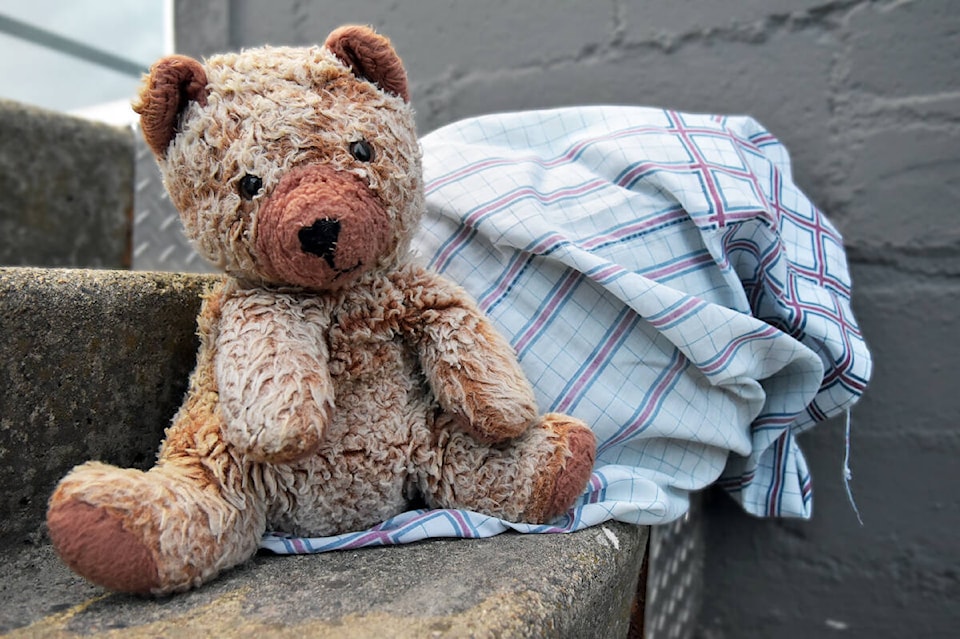The number of children living in poverty in B.C. increased by nearly 10,000 between 2020 and 2021, a new report has found.
First Call Child and Youth Advocacy Society released its latest annual poverty report card on Monday (Feb. 26), revealing the first jump in child poverty rates in the province in a decade.
In 2021, 14.3 per cent of children lived in poor households, amounting to 126,120 kids aged 0-17. It’s an overall decrease from every year the report card has been completed up until 2019, but a one per cent increase over 2020.
Monday’s report card pointed to inadequate incomes and the soaring costs of food and housing as the main drivers of the sudden jump.
‘The cost to so many children and youth growing up in poverty is simply too high for our society to bear,’ the society’s executive director, Adrienne Montani, said in a statement.
She noted that certain families are more likely to be impacted by poverty than others.
The children of lone-parent families, for instance, had a 40.4 per cent poverty rate, nearly three times higher than the overall rate. The report found most lone-parent homes were female-led and that they faced numerous barriers, such as pay inequity, low wages and a lack of affordable child care.
READ ALSO: Pandemic benefits pushed down B.C.’s child poverty rate in 2020: advocacy group
Poverty rates were also higher among non-White families.
For children living on the 67 First Nations reserves included in the report, 31 per cent were experiencing poverty in 2021. Arab, Korean, West Asian, Chinese, Southeast Asian and Black children were all also more likely to live in poverty than non-racialized kids. The only racialized children less likely on average to experience poverty were those from Japanese, South Asian and Filipino families, according to the report.
Recent immigrant children were also at a higher risk of poverty than the average B.C. child, with 21 per cent living in poverty in 2021.
The report further pointed to where a child lives as an indicator of their poverty risk level. In 2021, 18.7 per cent of children in rural B.C. lived in poverty, more than four per cent higher than the average. The districts with the highest rates included Mount Waddington Regional District, Central Coast Regional District, Skeena-Queen Charlotte Regional District and Alberni-Clayoquot Regional District.
The lowest regional rate was in the East Kootenays, where 11.7 per cent of children lived in poverty.
Compared to the rest of Canada, B.C. is faring better. The average child poverty rate nationwide in 2021 was 15.6 per cent. The only regions with lower rates than B.C. were Quebec at 11.3 per cent and the Yukon at 10.3 per cent. The highest rates were recorded in Nunavut at 35.8 per cent, Saskatchewan at 24.2 per cent and Manitoba at 24 per cent.
The report found one factor more present in B.C. than the rest of Canada was the level of income disparity. In 2021, B.C. families in the highest income decile made 25 times more than families in the lowest decile. This was significantly higher than the Canadian average ratio of 16 times.
Monday’s report made 25 recommendations to address this gap and child poverty overall.
Among them are calls to increase the minimum wage to $20 per hour by 2026, raise income and disability assistance rates, make parental leave benefits universal, better address inequities in Indigenous communities, scale up affordable rental housing, provide free public transit for children aged 13 to 18 and low-income people, and introduce universal coverage for prescriptions, dental care and eye care. The report further calls for B.C. to index its family benefit, so it rises inline with inflation.
Asked about the recommendations on Monday, Minister of Social Development and Poverty Reduction Sheila Malcolmson didn’t commit to implementing any of them, but said B.C.’s new poverty reduction strategy will touch on some of the same issues. That legislation is set to be tabled this spring.
READ ALSO: B.C. Budget 2024: One-off affordability boost for families, small cut to hydro costs
